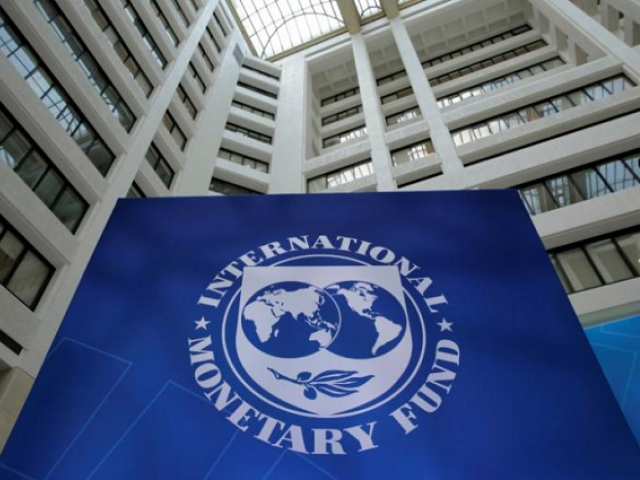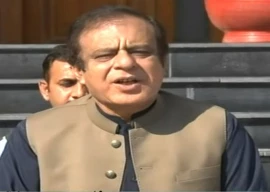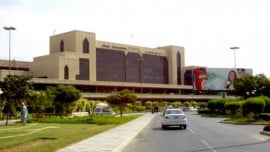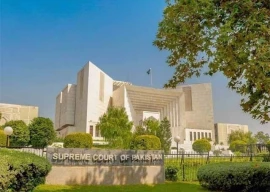
ISLAMABAD: Just a day after Finance Minister Asad Umar claimed that the economy is out of the woods, the International Monetary Fund (IMF) has said Pakistan’s economy will grow at an average rate of just 2.5% during the next five years and its external imbalance will remain elevated.
If the IMF’s prophecy turns out to be true, Prime Minister Imran Khan will not be able to fulfil his promise of creating 10 million jobs and building five million houses.
The average 2.5% growth rate for five years is less than half of what the Pakistan Tehreek-e-Insaf government has targeted for its 5-year term.
In its annual flagship report ‘World Economic Outlook’ (WEO), the global lender has predicted only 2.9% economic growth rate for this fiscal year, ending on June 30.
Pakistan, IMF at odds over Rs5.4tr tax collection target
The WEO report has been titled this year as “growth slowdown precarious recovery” – the label that coincidently reflects prevailing economic conditions in Pakistan.
The report says in the next fiscal year, the economic growth rate in Pakistan will further slow down to only 2.8% and by 2024 the average pace will be just 2.5%.
It is the lowest economic growth rate prediction by any multilateral lender.
The World Bank has projected 3.4% GDP growth rate and the Asian Development Bank has showed it at 3.9% for this fiscal year.
The report has projected Pakistan’s current account deficit at 5.2% of the GDP for this fiscal year that will require over $14 billion for bridging it. The 5.2% current account deficit is higher than the estimates of the Finance Ministry.
PTI govt's roadmap to stability centres around fiscal discipline
Finance Minister Asad Umar on Monday revealed his medium-term economic framework that promises the highest economic growth rate in 15 years by 2022-23.
Umar had said Pakistan’s economy is out of crisis situation but the stabilisation phase would continue for next one and half years.
“In Pakistan, in the absence of further adjustment policies, growth is projected to remain subdued at about 2.5%, with continued external and fiscal imbalances weighing on confidence,” states the report.
Pakistan has already made significant monetary adjustments that have started impacting every sphere of life.
The exchange rate depreciation has spiralled the inflation. The tight policies are pulling back the economic growth rate that will increase unemployment in the country.
According to the report, current account deficit would slightly reduce to 4.3% of the GDP in next fiscal year 2019-20 but the average deficit in five years would be 5.4%. Pakistan will remain a net debtor.
The Consumer Price Index-based inflation has been projected at 7.6% for this fiscal year that is expected to slow down to 7% by end of next fiscal year, according to the WEO.
The report has been released on a day when the finance minister left for Washington to attend Spring Meetings of the Breton Wood System –the IMF and the WB. On the sidelines, Umar would meet senior management of the IMF besides holding meetings with the US administration in a hope to clinch a deal.
The WEO says the unemployment rate in Pakistan will remain unchanged in this fiscal year but will marginally increase to 6.2% in the next fiscal year. The independent economists have predicted nearly 8% jobless rate due to slowing economic growth rate.
The country has been clubbed with the Middle East, North Africa, Afghanistan, and Pakistan (MENAP). The IMF said the economic growth in this region is expected to decline to 1.5% in 2019, before recovering to about 3.2% in 2020.
The outlook for the region is weighed down by multiple factors, including slower oil GDP growth in Saudi Arabia; ongoing macroeconomic adjustment challenges in Pakistan; US sanctions in Iran; and civil tensions and conflict across several other economies, including Iraq, Syria, and Yemen, where recovery from the collapse associated with the war is now expected to be slower than previously anticipated.
The medium-term outlook for the Middle East, North Africa, Afghanistan, and Pakistan region is largely shaped by the outlook for fuel prices, needed adjustment to correct macroeconomic imbalances in certain economies, and geopolitical tensions, says the IMF.
Growth in Saudi Arabia is expected to stabilise at about 2¼–2½% over the medium term, as stronger non-oil growth is countered by the subdued outlook for oil prices and output.
Also, the convergence prospects are bleak for some emerging market and developing economies. Across sub-Saharan Africa and the Middle East, North Africa, Afghanistan, and Pakistan region, 41 economies, accounting for close to 10% of global GDP in purchasing-power-parity terms and close to 1 billion in population, are projected to grow by less than advanced economies in per capita terms over the next five years, implying that their income levels are set to fall further behind those economies.


































1713509570-0/Taylor-Swift-Album-Release-(1)1713509570-0-270x192.webp)
























COMMENTS
Comments are moderated and generally will be posted if they are on-topic and not abusive.
For more information, please see our Comments FAQ